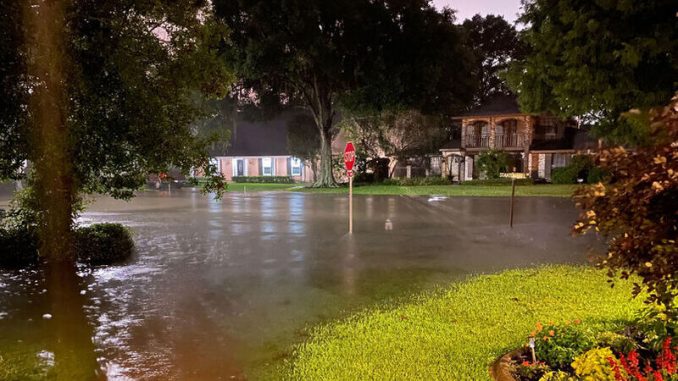
St. Charles Parish resident Jennifer Simard learned first-hand how drastically flood insurance changed when the National Flood Insurance Program rolled out its new program – known as Risk Rating 2.0.
“We were buying our first home in August 2021 and we were quoted $527 a year,” she said. “This is for a house in Destrehan. Well, Hurricane Ida came and pushed back our closing and we didn’t close until November 2021. When we went to get our insurance we were made aware that the flood insurance would now cost over $5,000 because of the new FEMA rating.”
Luckily, Simard said, her realtor Brandy Nichols informed her that she could assume the sellers’ policy and pay what they were paying – which was around what she was originally quoted.
But it doesn’t mean Simard is out of the woods just yet.
Her policy – along with everyone else’s FEMA-issued flood insurance policy – is set to increase 18% per year – the most permitted by federal law – until it reaches its peak.
Nichols, a realtor with GL Realty Group LLC, said the new flood insurance guidelines will undoubtedly change the landscape of real estate in not only St. Charles Parish, but the entire country.
“I just don’t understand how people will realistically afford it,” she said.
The new program went into effect Oct. 1, 2021, meaning new policies beginning Oct. 1 were subject to the new rating methodology. All remaining policies renewing on or after April 1, 2022, will be subject to the new rating methodology.
But the new methodology, Nichols said, is completely unclear. She said this affects every homeowner but especially those building a home, since their policies will have to be new because there is no old policy to assume.
And the speed at which FEMA rolled out the new program meant that homeowners who didn’t already have flood policies were unable to get flood insurance before the new program began.
It takes 30 days for a new policy to take effect, and FEMA announced and rolled out the new program in two weeks.
“We were always told that the flood maps would change and hopefully it would be for the better because of all the levee work,” Nichols said. “We were expecting a change, but not for the worse. No one knew it was serious. Nobody knew it was coming. I think they purposely didn’t release it so people didn’t hurry up and go get insurance.”
From what she has been told, Nichols said, distance from a body of water and the lowest elevation point of the property is now more important than flood zone maps.
FEMA representatives have publicly stated that the new program will make flood insurance more affordable for more people. The government website states that Risk Rating 2.0 is “equity in action.”
“Before a premium was based on elevation of the house, and now its access to water,” Nichols said. “I’ve not met one person whose insurance will be lower.”
According to FEMA, over the past 50 years the agency has collected $60 billion in NFIP premiums but has paid $96 billion in costs.
“Taxpayers and policyholders are adversely impacted when the program does not generate the revenue needed to pay claims,” the FEMA website states. “Risk Rating 2.0 will help put the NFIP on solid financial footing by creating a more stable program that is accountable to taxpayers.”
Nichols said with unclear guidelines, the best way for someone to determine what their policy will cap at or what their new policy would be is to call an insurance agent and get them to run the numbers.
“There are people fighting it nationally, but we’ve been told it’s not going to change and that we’ve been underpaying this whole time,” she said. “Flood zones don’t matter. I’ve interviewed two insurance reps and no one really knows what the formula is.”
Drew Knight, another realtor with GL Realty Group LLC, agreed.
“This change happened under everyone’s noses, and I blame are elected officials for not for warning us about what this new 2.0 rate was going to do across the board,” he said. “I would advise that those who are elected to be in charge need to be held accountable.”
He added that he anticipates changes coming to the real estate market soon.
“I believe the real estate market will start seeing a lot of people be hesitant to buy house in certain areas and or scale back how much house they can afford due to how high insurance rates will be,” Knight said. “I believe across the parish new construction will be hit hardest and that will come to a stand-still, if not stop all together, due to not being able to assume a policy since it’s new construction.”





Be the first to comment